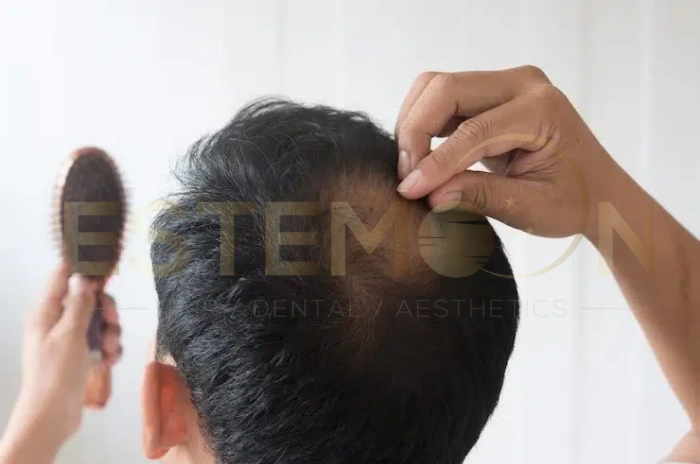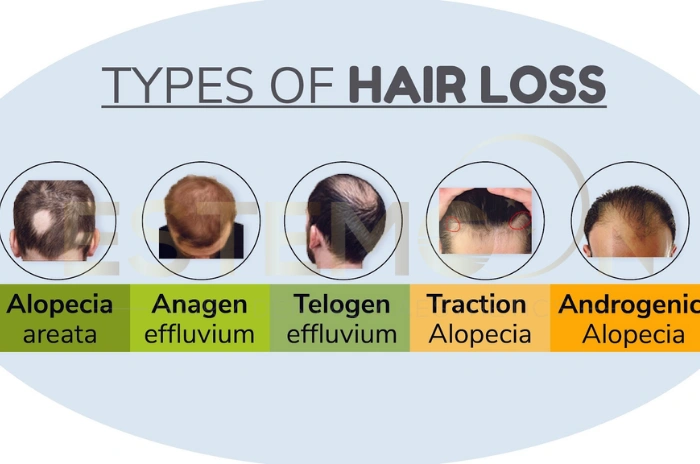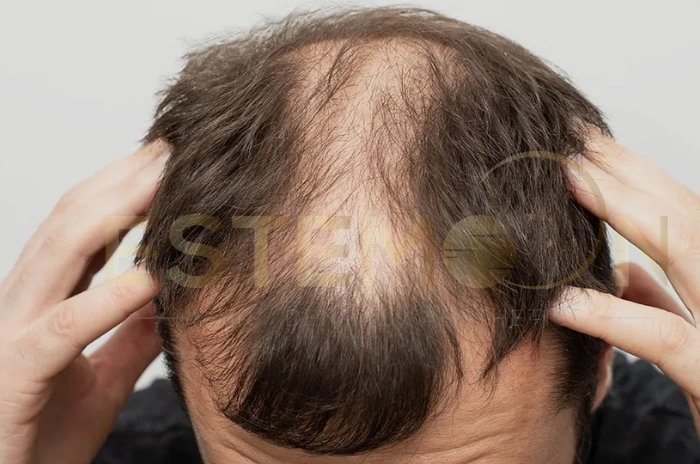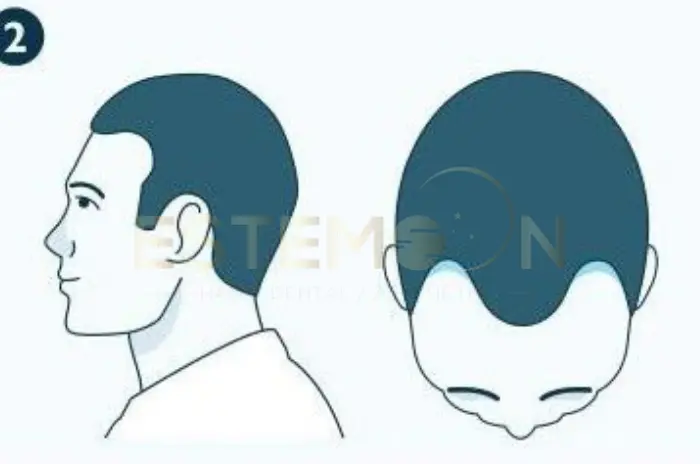Hair loss can be one of the most distressing physical manifestations of stress, affecting millions of people worldwide. Understanding the connection between psychological pressure and hair shedding causes is crucial for proper treatment and recovery. When the body experiences significant stress, it can disrupt the normal hair growth cycle, leading to various forms of hair loss that may appear weeks or months after the triggering event.
The relationship between stress and hair loss is complex, involving hormonal changes, immune system responses, and behavioral factors. Stress-related hair loss affects both men and women of all ages, though the severity and presentation can vary significantly from person to person. Recognizing the different types of stress-induced hair loss is the first step toward effective treatment and restoration.

Can stress cause hair loss
Yes, stress can cause hair loss through multiple mechanisms that affect the natural hair growth process. When the body experiences physical or emotional stress, it triggers a cascade of hormonal and physiological changes that can push hair follicles into a resting phase prematurely. This disruption occurs because the body prioritizes essential functions over non-essential processes like hair growth during times of crisis.
The stress response releases cortisol, a hormone that can interfere with the normal functioning of hair follicles. Additionally, stress can reduce the absorption of essential nutrients needed for healthy hair growth, including protein, iron, and B vitamins. Blood flow to the scalp may also decrease during periods of high stress, further compromising hair follicle health.
Chronic stress hair loss develops gradually over time, while acute stress can cause more sudden and dramatic hair shedding. The type and severity of hair loss often depend on the duration and intensity of the stressful period, as well as individual genetic factors and overall health status.
Types of hair loss linked to stress
Several distinct types of hair loss are directly connected to stress, each with unique characteristics and progression patterns. Understanding these different forms helps in identifying the appropriate treatment approach and setting realistic expectations for recovery.
| Type of Hair Loss | Characteristics | Timeline | Reversibility |
|---|---|---|---|
| Telogen Effluvium | Diffuse thinning across scalp | 2-3 months after stress | Usually temporary |
| Alopecia Areata | Patchy hair loss in circular areas | Can occur quickly | Often reversible |
| Androgenetic Alopecia | Pattern baldness acceleration | Gradual progression | May be permanent |
| Trichotillomania | Irregular patches from pulling | Ongoing with stress | Reversible with treatment |
Telogen effluvium is the most common form of stress hair loss. This condition occurs when stress pushes a large number of hair follicles into the telogen (resting) phase simultaneously. Hair typically falls out 2-3 months after the stressful event, resulting in diffuse thinning across the entire scalp.
Alopecia areata presents as patchy hair loss in distinct circular or oval areas on the scalp or other parts of the body. This autoimmune condition is strongly linked to stress, where the immune system mistakenly attacks hair follicles.
Androgenetic alopecia, while primarily genetic, can be accelerated by chronic stress. Stress hormones increase follicle sensitivity to DHT, leading to faster progression of pattern baldness.
What is Trichotillomania and Its Link to Stress
Trichotillomania is a psychological disorder characterized by the compulsive urge to pull out one’s own hair. This condition is closely linked to stress, anxiety, and emotional regulation difficulties. Unlike other forms of stress-related hair loss, trichotillomania is a behavioral response to stress rather than a physiological one.
People with trichotillomania hair pulling often experience temporary relief from tension when they pull their hair. The behavior typically targets easily accessible areas like the scalp, eyebrows, or eyelashes. The resulting hair loss appears patchy and irregular, with hairs of varying lengths.
Hair pulling and stress create a cyclical pattern where the resulting hair loss causes additional stress and shame, potentially worsening the compulsive behavior. Treatment requires addressing both psychological factors and developing healthy coping strategies for stress management.

Signs of stress induced hair thinning
Recognizing the early signs of stress-related hair loss is essential for prompt intervention and better outcomes. The symptoms may develop gradually or appear suddenly, depending on the type and cause of the hair loss.
Increased hair shedding during washing or brushing is often the first noticeable sign. Hair falling out when washing hair in amounts greater than the normal 50-100 strands per day indicates potential stress-related hair loss. A simple hair pull test can help assess severity.
Diffuse thinning across the entire scalp, rather than in specific patterns, is characteristic of telogen effluvium. The hair may appear less dense, and the scalp may become more visible, particularly in bright lighting. Sudden hair loss in circular patches suggests alopecia areata, while gradual thinning at the temples may indicate stress-accelerated androgenetic alopecia.
Treatment options for stress related hair loss
Effective hair loss treatment for stress-related conditions requires a comprehensive approach addressing both the underlying stress and the hair loss itself. The treatment strategy depends on the specific type of hair loss and its severity.
For telogen effluvium, the primary focus is stress reduction and nutritional support. Most cases resolve naturally within 6-12 months once stress levels normalize. Gentle hair care practices and adequate nutrition support the recovery process.
Topical treatments like minoxidil can help stimulate hair growth and may be particularly beneficial for androgenetic alopecia accelerated by stress. Corticosteroid injections are often the first-line treatment for alopecia areata, helping suppress the immune response attacking hair follicles.
When to see a doctor for hair loss becomes crucial when hair loss is extensive, progressive, or accompanied by other symptoms like scalp irritation or signs of infection. A dermatologist can perform proper diagnosis and recommend appropriate treatment options.
Effective Management and Treatment for Stress Hair Loss
Managing stress hair loss effectively requires a holistic approach that addresses both the physical and emotional aspects of the condition. Stress management techniques form the foundation of treatment and long-term prevention.
Regular exercise, meditation, and adequate sleep help regulate stress hormones and support overall health. Deep breathing exercises, yoga, and mindfulness practices can reduce cortisol levels and promote relaxation. Establishing a consistent daily routine helps manage stress.
Nutritional support plays a vital role in hair recovery. A balanced diet rich in protein, iron, vitamins B, C, and D supports healthy hair growth. Biotin, zinc, and omega-3 fatty acids are commonly recommended for hair health.
Professional counseling can help address underlying stress triggers and develop healthy coping mechanisms. Gentle hair care practices protect remaining hair and create optimal conditions for regrowth.
The Timeline for Hair Regrowth After a Stressful Event
Understanding the timeline for hair loss after stress helps set realistic expectations and reduces anxiety about the recovery process. The relationship between stress and hair loss follows a predictable pattern, though individual variation is common.
Hair loss typically becomes noticeable 2-3 months after a significant stressful event. This delay occurs because hair follicles affected by stress continue their current growth phase before entering the resting phase and eventually shedding.
Recovery begins once stress levels normalize and the body’s systems return to balance. New hair growth starts within the follicles immediately, but visible improvement may take 3-6 months to become apparent. Full recovery to pre-stress hair density typically takes 6-12 months.
How to stop stress hair loss involves consistent stress management and patience during the recovery process. Avoiding additional stressors, maintaining good nutrition, and following recommended treatments support optimal regrowth.
FAQs About Types of Hair Loss Linked to Stress
Can stress really cause hair to fall out?
Yes, stress can definitely cause hair to fall out through hormonal changes that disrupt the normal hair growth cycle and push follicles into a resting phase prematurely.
How long does stress-related hair loss last?
Stress-related hair loss typically lasts 6-12 months, with hair shedding peaking 3-4 months after the stressful event and full regrowth occurring within a year once stress is managed.
What are the main types of hair loss?
The main types of hair loss from stress include telogen effluvium (diffuse thinning), alopecia areata (patchy loss), stress-accelerated androgenetic alopecia, and trichotillomania (compulsive hair pulling).
How can you stop hair loss from stress?
You can stop stress hair loss by managing stress through relaxation techniques, maintaining proper nutrition, getting adequate sleep, using gentle hair care practices, and seeking professional treatment when necessary.
Follow us on social media for updates, tips, and patient success stories:




